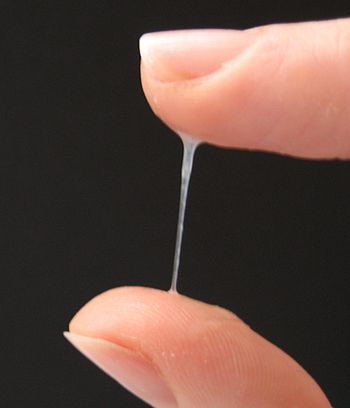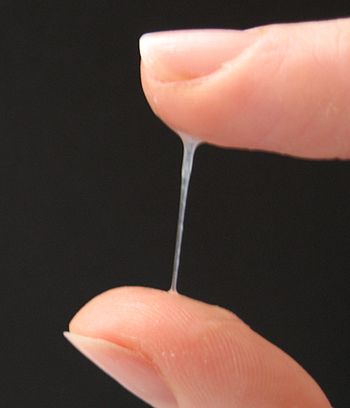
Why is There a Brownish Tinge to My Cervical Mucus?

Cervical Mucus: What is It?
Cervical mucus plays an important role in your ability to get pregnant. Your cervix secretes the mucus at the entrance to your uterus. The hormones in your body direct the changes to your cervical mucus.
As your menstrual cycle progresses, you will find that the color and consistency of your cervical mucus will change. When you aren’t particularly fertile, your cervical mucus (CM) will be cloudy in color and very sticky. As you get closer to ovulation, your body produces more estrogen. The estrogen causes your cervical mucus to become more slick and clear. It will have the consistency of raw egg whites and is called fertile cervical mucus.
What is the Importance of Cervical Mucus?
Fertile cervical mucus is sperm’s best friend and protector. Without it, the journey that the sperm has to make is challenging. When fertile, the cervical mucus help protect the sperm from the potentially harsh environment of the vagina.
It then helps transport the sperm into the uterus and on its way to fertilize the egg. The fertile cervical mucus helps filter out the damaged sperm and nourishes the healthy sperm so they can make the long journey.
Why is There a Brownish Tinge to My Cervical Mucus?
While most women assume that there is a problem with their body if their cervical mucus is brown, this generally isn't the case. In fact, there are many reasons why you might have a brownish tinge to your cervical mucus, so there is no reason to panic.
Old blood from the previous period, ovulation bleeding and implantation bleeding are the most common reasons for brown tinged cervical mucus. A brown tinge is often present during ovulation if you have experienced a ruptured follicle or due to trauma to the cervix. Of course, this doesn't always mean trauma, since trauma can be something as simple as sexual intercourse.
Less frequently, you will experience a brownish tinge as a result of implantation bleeding, meaning that you are pregnant. Conception can occur if there are healthy sperm waiting when the egg is released at ovulation. The newly fertilized ovum travels to the uterus and implants itself into the uterine lining. When the egg implants, a small amount blood is often released. The spotting that happens is typically either brownish or reddish in color and often tricks you into thinking that your period is starting earlier than expected.
You will usually see this type of spotting less than a week before your period is due to start. Spotting at this time could mean that your chances of getting a positive pregnancy test are a bit higher than usual. Not every woman experiences implantation bleeding. The small amount of blood from implantation is just reabsorbed for these women.
Other Causes for Brown Cervical Mucus Discharge
Hormonal imbalances caused by hormonal birth control or menopause can cause bleeding at times you typically don’t bleed. It can be light spotting or heavier bleeding.
Polycystic Ovary Syndrome (PCOS) and endometriosis can cause bleeding that can tinge your cervical mucus. You will definitely need to contact your doctor about these issues. They should be able to help formulate a plan that will help.
U ltimately, you need to look at where you are in your cycle. If it is around ovulation or about 8 to 10 days after ovulation, the brownish tinge could be totally normal. If you are having more like a period bleed or are bleeding multiple times during the month, you should talk to your doctor.
Resources:
Katz DF. Human cervical mucus: research update.
Am J Obstet Gynecol. 1991 Dec;165(6 Pt 2):1984-6. PubMed PMID: 1755453. https://www.ncbi.nlm.nih.gov/pubmed/1755453
Marquette University | Natural Family Planning. N.p., n.d. Web. 24 June 2017. Monitoring Your Cervical Mucus - https://nfp.marquette.edu/monitor_cervical_mucus.php
Tags:
Getting Pregnant
Quick links
Search
Contact Us
Shipping Information
Helpful Info
Terms of Service
Privacy Policy
Do not sell my personal information
Contact us
About us
BabyHopes.com is a family owned and operated business, opened in January 2001. We have been serving the trying to conceive community for over 20 years.
